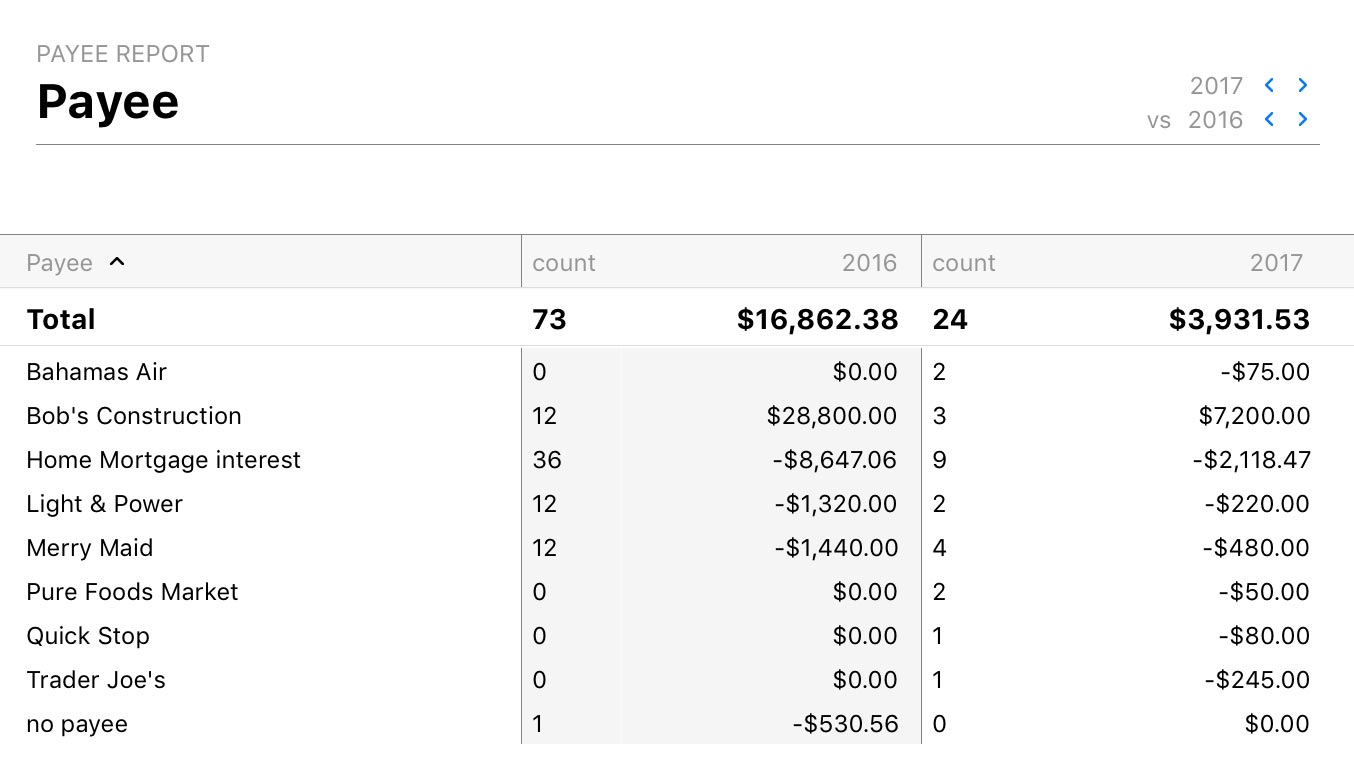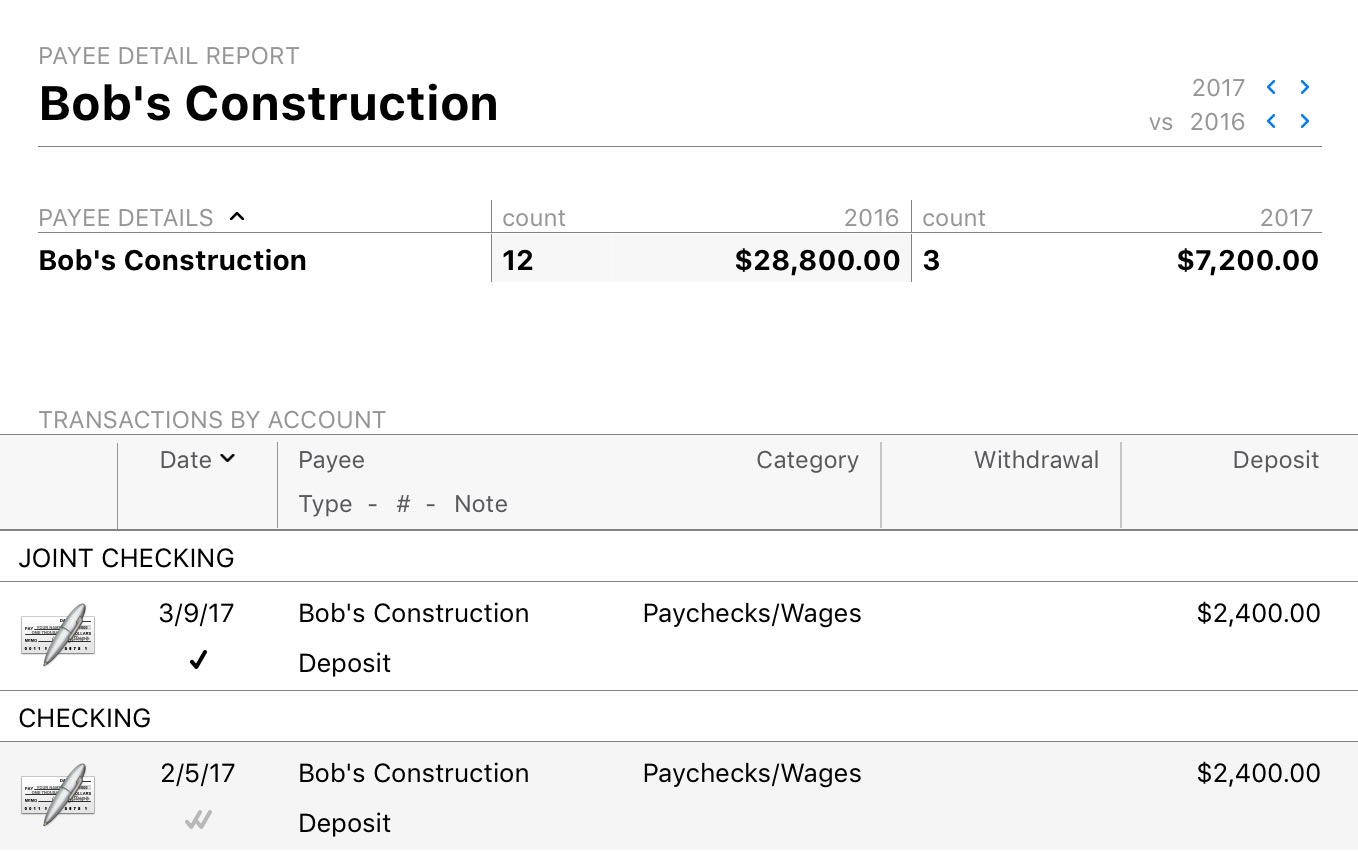How do I use the Payee Summary report?
The Payee report type is used to analyze where you direct your money, based on the payees assigned to your transactions. Banktivity's Payee report consists of a table showing your payee names and the total value of the transactions associated with each one.
When you first create a payee report, Banktivity gives you the option to "Group by category." If you choose this option, a "Payee by Category" report will be created – see below for more information on interpreting this report.
Interpret the Payee report

The report's type and name are shown at the top left. The date range (or ranges if you chose to include a comparison period) used for the report is at the top right. Click the arrow buttons to the left or right of the date to move backward or forward in time. If using a comparison period, you can use the second set of arrows to change that date range independently.
Below is a table showing the total value of the transactions associated with each payee within the date range covered by the report. On the left is the name of each of your payees; on the right is a count of the transactions assigned to each payee followed by the total value of those transactions. If there are any transactions in your accounts that do not have payees assigned to them, they are counted under "no payee." Click on any payee to drill down and view a Payee Detail report for that item (see below).
By default, the payees are sorted alphabetically by name. If you click any column header at the top of the table, you can sort by that column. Click the column header again to change the sort order.
Interpret the Payee by Category report

This report is similar to the Payee report, but it subtotals payees according to the categories assigned to their transactions. The report's type and name are shown at the top left. The date range (or ranges if you chose to include a comparison period) used for the report is at the top right. Click the arrow buttons to the left or right of the date to move backward or forward in time. If using a comparison period, you can use the second set of arrows to change that date range independently.
Below is a table showing categories in bold text with a count of the transactions assigned to that category and their total value. Under each category, in plain text, is a list of payees used in conjunction with that category, Each payee is shown with a count of the transactions assigned to that payee and category and their total value.
Payees with transactions that are not assigned to any categories are counted under "Uncategorized Expenses" or "Uncategorized Income" depending on their value. If there are any transactions in your accounts that do not have payees assigned to them, they are counted under "no payee." Click on any category to drill down and view a Category Detail report for that item (see Report Types: Income & Expense), or click on a payee to view a Payee Detail report (see below).
By default, categories and payees are sorted alphabetically by name. If you click any column header at the top of the table, you can sort by that column. Click the column header again to change the sort order.
Interpret the Payee Detail report

This report details the transactions associated with a particular payee. At the top is a summary table displaying the name of the payee, a count of the transactions assigned to it, and the total value of those transactions. Below is a table listing the details of the transactions.
By default, transactions are displayed on this report in reverse chronological order and appear just like they would in an account register. If you click any column header at the top of the table, you can sort by that column. Click the column header again to change the sort order.
Select a transaction and press Enter on your keyboard to edit it. Any changes you make to the transaction will be visible on the report immediately after saving.
Learn more about reports
For more information about configuring report options, see Add a Report. For more information about printing, exporting, and otherwise managing reports, see About Reports.